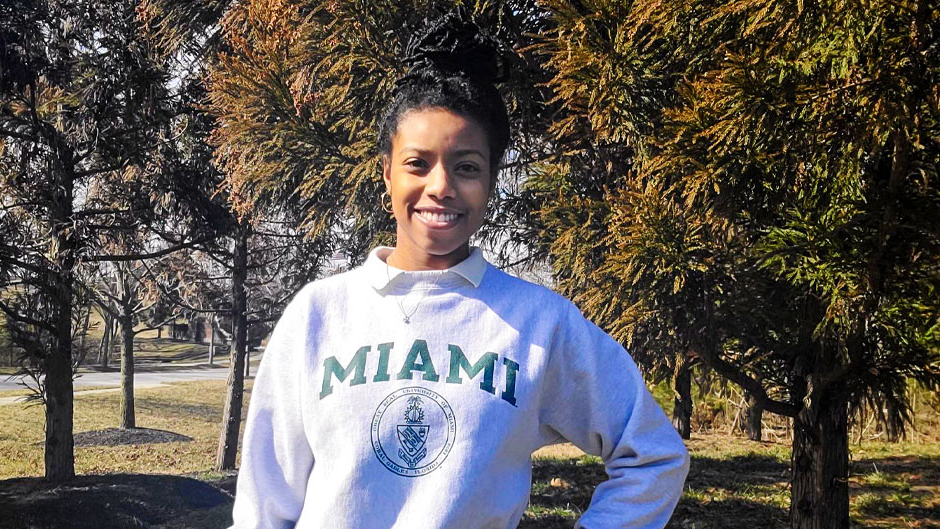Visitors near and far can get an immersive look at the University of Miami’s iconic Black history thanks to one inventive student.
Growing up, Taylor Washington became fascinated with the process of preserving history and art. She frequently visited museums with her mom, who was the first Black woman to be hired as a holding protection specialist with the National Archives and Records Administration in Washington, D.C.
“My mom’s passion for saving and protecting history inspired my love of history,” said Washington, a junior studying industrial engineering at the University of Miami.
To commemorate Black History Month, Washington used that same passion to create and curate a virtual museum to educate others about the Black achievements and contributions at and beyond the University. With assistance from University Archives, Washington compiled more than 150 photos and videos that she said “depict the Black excellence on the University of Miami campus” using ArtSteps, a program Washington was introduced to when she was a Library Adobe Scholar.
Given her current enrollment as a remote student this semester, Washington shared that lacking in-person resources presented a challenge as well. Marcia Heath, university archives technician, was elated to assist Washington with photos and videos for the virtual museum.
“I am always happy to help students with their requests,” said Heath, who in 2015 discovered a copy of “Malaika,” a handbook published in the 1970s and 1980s by the United Black Students (UBS) organization. In it were listed resources by and for the Black students and faculty members at the University.
Though Washington, the president of the University’s chapter of the National Society of Black Engineers (NSBE), has experience with building concepts from scratch, she was met with some challenges that she was determined to overcome and succeed.
“I was familiar with the process of getting information that I needed to make this project happen, but when it came to working with other people outside of the library, I had to tell them something that didn’t exist yet,” Washington said about the challenges she faced when putting this virtual museum together. “I had to leave a lot of empty spaces or even use sample pictures to kind of sell this idea of the virtual museum.”
Washington felt compelled to create and follow through on the project because she wanted to educate students on the trailblazers that came before her and her peers.
Niana Mays, NSBE event coordinator, applauded Washington for her dedication to not only the production of the virtual museum, but their organization’s future.
“She’s a go-getter. Our organization is small, and she’s been putting in so much work to get students to join the club—it’s been amazing to witness,” said Mays, a sophomore majoring in biomedical engineering. “I was amazed to see the museum for the first time because I didn’t have an image in my mind of what it would look like. It was amazing to see it come to fruition.”
Though the virtual museum focuses on Black students and faculty and staff members at the University, she wants everyone—no matter their race, creed, gender, or identity—to explore the virtual museum and learn about the University’s Black history and culture. Washington personally reached out to every organization leader showcased in the project, including Black Greek Letter Organization Zeta Phi Beta, Incorporated; Yellow Rose Society; Brothers Overcoming Negativity and Destruction; and the Black Alumni Society.
“As an engineering student, I saw a problem. And what I was trying to solve with this project is a lack of understanding of other people’s history,” said Washington. “I think it’s important for us all to understand our own history. Because as young students, we are all University of Miami students. It’s up to us to remember what the trailblazers have done so that we can apply what they learned to solve problems in the future.”
Experience the virtual Black History Museum here.

